Triple Play Digital Services: Comcast & Verizon
(with Josh Page)
 Here in central New Jersey, it's has been the summer of the "triple play." No, I'm not talking baseball -- this is about the battle to provide digital connections to the home, with the full bundle of services -- telephone, television, and Internet.
Here in central New Jersey, it's has been the summer of the "triple play." No, I'm not talking baseball -- this is about the battle to provide digital connections to the home, with the full bundle of services -- telephone, television, and Internet.
 It's also been the summer for the roll-out of the Verizon FiOS (Fiber Optic Service), the next upgrade in digital service that promises faster Internet data rates, and allows Verizon to compete head-on with Comcast in providing the full suite of services. Meanwhile, Comcast is fighting back with its own all-digital package of services and healthy advertising budget.
It's also been the summer for the roll-out of the Verizon FiOS (Fiber Optic Service), the next upgrade in digital service that promises faster Internet data rates, and allows Verizon to compete head-on with Comcast in providing the full suite of services. Meanwhile, Comcast is fighting back with its own all-digital package of services and healthy advertising budget.
![]() So what's the best choice in this battle of the phone/TV/Internet provider heavyweights, Comcast Corporation and Verizon Communications? Is the choice about technology, or is it more about the packages of services and deals that are being offered as this battle heats up?
So what's the best choice in this battle of the phone/TV/Internet provider heavyweights, Comcast Corporation and Verizon Communications? Is the choice about technology, or is it more about the packages of services and deals that are being offered as this battle heats up?
Looking at the technology, it's clear that Verizon's FiOS service offers a significant jump in download data rates, from Verizon's previous DSL service at up to 3 Mbps, to Comcast cable-based service at 6 to 8 to soon 16 Mbps (x2 with PowerBoost), to Verizon FiOS at 10 to 20 and up to 50 and then 100 Mbps and beyond.
But beyond the speed of light metaphors, the battle here in New Jersey is focused on the pricing. Not surprisingly, Verizon is undercutting Comcast on its traditional television service, and Comcast is undercutting Verizon on its base phone service. And both are promoting bundled triple play services with digital phone, TV, and Internet at around $99 with an annual contract.
In comparing the services available today, Verizon is pushing the promise of better technology and a generally better slate of services at lower prices. But Comcast offers its digital services throughout its installed network, while Verizon is just in the early phase of its rollout of FiOS service, with New Jersey among the early recipients.
So here's our attempt to explain the Comcast and Verizon service options for telephone, television, and Internet service, as well as the bundled plans for triple play services -- down to the gory detail on current pricing plans (which will change as soon as you read them).
See full article: Triple Play Digital Services: Comcast & Verizon
Plus, there's some more context in digging further into related issues: the home installation process, the cable / telco market battle, and future bandwidth enhancements -- plus a look at broadband beyond the U.S., and alternate delivery options from Internet and wireless.
See sidebar article: Triple Play: Installation, Market, Futures

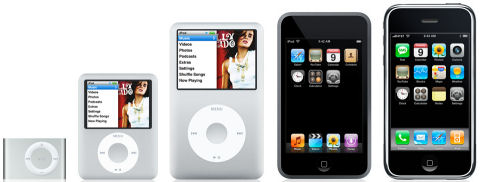
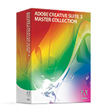 The new
The new  Besides audio recording, editing, and enhancement,
Besides audio recording, editing, and enhancement,  Meanwhile,
Meanwhile, 



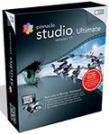
 Just look at these devices (like this Panasonic HDC-SD5), now available from companies including JVC, Panasonic, Samsung, and Sony. They're basically the size of a soda can -- a big lens, with a flip-out display on the side and some electronics and slots on the back for the battery and memory card. They're just so easy to carry and easy to use.
Just look at these devices (like this Panasonic HDC-SD5), now available from companies including JVC, Panasonic, Samsung, and Sony. They're basically the size of a soda can -- a big lens, with a flip-out display on the side and some electronics and slots on the back for the battery and memory card. They're just so easy to carry and easy to use. Actually, SD cards work just fine -- you now can fit an hour or more of video on an affordable SD card, so you can carry multiple hours of removable storage in the space previously used by one DV tape cassette. You can get a 4 GB SDHC card for around $50, and 8 GB SDHC cards are available from companies like Kingston and SanDisk for under $100.
Actually, SD cards work just fine -- you now can fit an hour or more of video on an affordable SD card, so you can carry multiple hours of removable storage in the space previously used by one DV tape cassette. You can get a 4 GB SDHC card for around $50, and 8 GB SDHC cards are available from companies like Kingston and SanDisk for under $100. Now SanDisk has retooled the product, and recently announced the redesigned
Now SanDisk has retooled the product, and recently announced the redesigned  But if you mess with DVDs a lot, or want more precise control over the exact segments that you extract, or need to extract to specific formats in the full original quality, then check out
But if you mess with DVDs a lot, or want more precise control over the exact segments that you extract, or need to extract to specific formats in the full original quality, then check out 
 The Solio chargers combine:
The Solio chargers combine: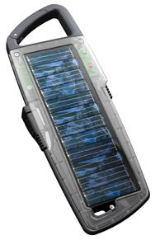 The Solio Classic ($99) unfolds with three panels, and includes a suction cup to attach to a window. The battery is 3.6 volts, 1600 mAh -- A fully charged unit is rated to recharge a typical mobile phone up to two times, or deliver up to 15 hours of MP3 music.
The Solio Classic ($99) unfolds with three panels, and includes a suction cup to attach to a window. The battery is 3.6 volts, 1600 mAh -- A fully charged unit is rated to recharge a typical mobile phone up to two times, or deliver up to 15 hours of MP3 music. For example, the Samsung YP-U3 is a stick music player with 2 GB for under $89. It's available in some uncommon pastel-ish colors, white, black, blue, green, and pink.
For example, the Samsung YP-U3 is a stick music player with 2 GB for under $89. It's available in some uncommon pastel-ish colors, white, black, blue, green, and pink.  The Samsung YP-K3 has a similar design sense, as a slim and elegant player with 2 GB for $119, and 4 GB for under $169. The player is framed in silver around the edges, with the rich colors on front and back: black, red, and green.
The Samsung YP-K3 has a similar design sense, as a slim and elegant player with 2 GB for $119, and 4 GB for under $169. The player is framed in silver around the edges, with the rich colors on front and back: black, red, and green. The
The 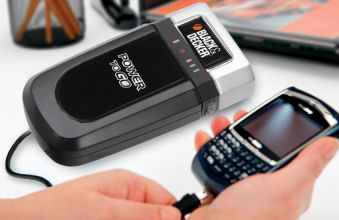 For more power, try the line of
For more power, try the line of  The Inflight Power Cable converts the audio signal into USB power, so it works with devices including cell phones, smart phones, music players, and game players using existing USB charging cables.
The Inflight Power Cable converts the audio signal into USB power, so it works with devices including cell phones, smart phones, music players, and game players using existing USB charging cables.